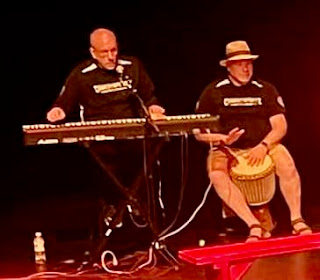Desert Wonderland

First the grumblings:
Tucson the city is like everything that's wrong with Portland's TV Highway--times ten. Yes, there's a quaint downtown with interesting shops, an arts district, and a few good places to eat. As soon as you've passed the rattlesnake pedestrian bridge, though, Tucson is nothing but mile after mile of unremitting suburban sprawl: strip malls, fast food franchises, car dealerships, and nothing to distinguish it from any other American metro monoculture. We came to Tucson hoping for some Southwestern flavor, Mexican influence, some sense of place. The neighborhood we're staying in has adobe-style houses, but apart from that, we might as well have stayed in Beaverton.
And in case you're wondering, yeah, it really sucks to get sick on the first day of a vacation.
But now on to the wonder.
The main reason we chose Tucson for our winter vacation was the cactus. Tucson borders the Saguaro National Park, and is within daytrip distance of the Organ Pipe National Monument. Cactus is everywhere, and we came to hike through cactus forest. My cold and Amy's knee troubles kept us from doing anything strenuous, but we were able to have two spectacular day hikes through what is aptly named the Cactus Forest.
I've seen saguaros before, but never in these numbers; nor have I been truly aware of the diversity of cactus. I couldn't help thinking I'd fallen into a painting, or was on some alien planet. The high deserts I love in Oregon and Utah bear little resemblance to this explosion of prickly flora.

Seeing how these plants have adapted to their environment--photosynthesizing directly through their trunks and branches, rather than through leaves, which have in turn been transformed into protective sharps; developing crenelated structures that expand to absorb water during sporadic rainstorms; patiently holding on through long periods of aridity and intense heat--I was humbled at the ingenuity of evolution. Wikipedia tells me cacti are native to the Americas, with only one exception. It struck me as I walked through this prickly Eden that I was getting a preview of what interplanetary exploration will be like. The earth has many deserts, and they have much in common: lack of water, heat. less nutritious soil. It would not be surprising to find similar life forms in all these deserts. And yet, traveling just a thousand miles from the deserts of Oregon, I encountered a biosphere utterly unlike anything I've seen before. Life had to tackle the same problems in both places, but came up with radically different answers: instead of junipers and sage, prickly pears and saguaros.
I couldn't help thinking, as we walked, that the first humans to land on a world that sustains life will have a similar experience--times ten or more. Just as Tucson sprawl is like Portland's, but massively bigger, so will the variations in life on worlds separated by light years be astronomically different from our own. Life will be facing the same problems--how to thrive in an environment that is hot/cold, wet/dry, etc. It's a shame I won't live long enough to know the answers to that question, but it's fun wondering about it.
Another feature of this desert that intrigued me was the ubiquity of the wash, a dry stream bed that only seas water during flash floods. The trails we were following occasionally went through these areas which are naturally more open that the rest of the desert. At other times, the trail (cut deep in the ground by overuse by hikers) had been expanded by the presence of water. I was reminded that water takes the easiest route as it flows through an area, as much an opportunist as the plant life we saw all around us. The suburban development I'd been grumbling about showed the same tendency, spreading across the valley floor to the utter limits of the national park.
That's life. Whether it's the virus my body is fighting off, the barbed flora covering the hills around Tucson, or the mile after mile of asphalt atrocities that make up the bulk of this city, life will find a way to grow, spread, thrive, adapt.
We learned so much on those short walks. We will be back.


Comments
Post a Comment